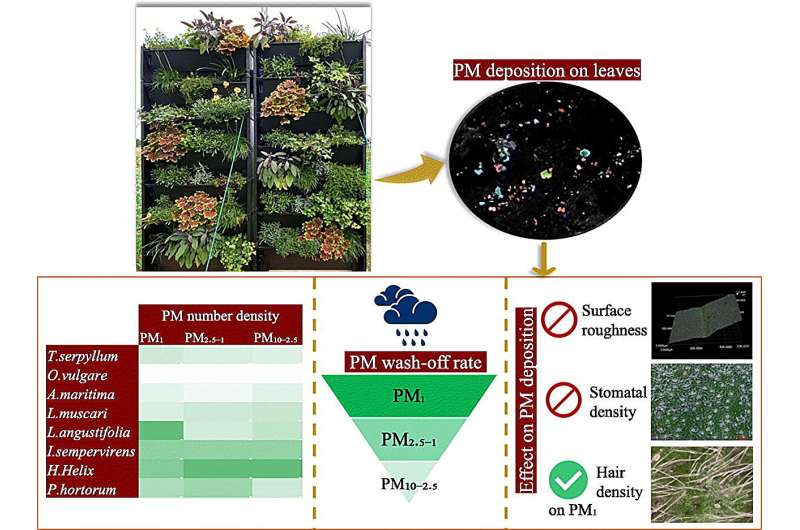This article has been reviewed according to Science X's editorial process and policies. Editors have highlighted the following attributes while ensuring the content's credibility:
fact-checked
trusted source
proofread
Study explores mixtures of plant species that help green walls clean up the air

Green walls can strip pollution from the air—and some plants do it better than others, according to new research from the University of Surrey.
Researchers planted 10 species on a custom-built 1.4m green wall beside the A3 in Guildford.
Mamatha Tomson, postgraduate researcher at the University of Surrey, said, "By planting vertically on a green wall, communities can clean up their air without taking up too much street space."
"Our study suggests that this process depends not only on the shape of its leaves but on the micromorphological properties of their surfaces. We think a good mixture of species will produce the most effective green walls—and look forward to carrying out further research to see if we're right."
Plants remove air pollution in two steps. First, they catch particles of pollution on their leaves. Then, the rain washes them safely to the ground.
Evergreen Candytuft and Ivy leaves were found to be especially good at trapping pollutant particles, large and small.
Meanwhile, rain was able to wash most of the pollution off the hairy leaves of Lavender. Candytuft and Marjoram also performed well in washing off smaller particles of pollution.
Professor Prashant Kumar, director of the University's Global Centre for Clean Air Research (GCARE), said, "We hope that town planners and infrastructure experts can use our findings to think more carefully about what they plant."
"Having a green wall is a great way of removing pollution—but what you plant on it can make a big difference to how successful it will be."
The study is published in the journal Science of the Total Environment.
More information: Mamatha Tomson et al, Exploring the interplay between particulate matter capture, wash-off, and leaf traits in green wall species, Science of The Total Environment (2024). DOI: 10.1016/j.scitotenv.2024.170950
Provided by University of Surrey




















